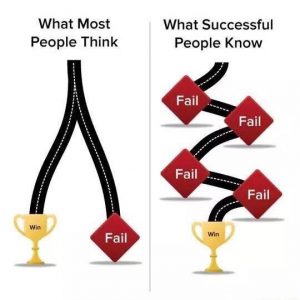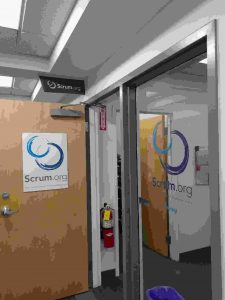
Last week I was an attendee of the Coaching Skills Workshop facilitated by Stephanie Ockerman. Below are some highlights of the class complimented with a humble evaluation.
Background
It’s important to know that Stephanie and I met by working at the same consulting company several years ago. We were in the same practice in the company, worked for the same client, shared similar war stories, and are traveling along similar career paths of teaching and coaching. We’ve even played volleyball together. I consider Stephanie a great colleague and friend.
I have also had the honor to be a participant in some of Stephanie’s other classes both as a student and as an evaluator in a dry run. I have always been impressed with her delivery of the class material and her method, which had always had a healthy balance of instruction and collaboration. Everything is very visual, and it’s not uncommon for her to run out of wall space from her drawings before the class is finished. She will usually provide Powerpoints, drawings, and physical takeaways like handouts. Hey, for fun, ask her “Why Agile Socks?”
Who this class is for?
Stephanie describes the target audience for this class as “anyone who is a member of or who supports an agile team”. I agree with that statement, and I would say that this class is a benefit to anyone who considers themselves an “enabler”. So a scrum master and agile coach definitely apply here, however, very little scrum framework or agile knowledge is needed in my opinion. They are a definite plus since a scrum master has a service to individuals, the team, and the organization, and one who has experienced these roles will benefit greatly from the teachings of this class, but anyone who works with people in a coaching or enabling role could also benefit.
I would also add that a basic understanding of topics likes empathy, emotional intelligence, active listening, and compassion will help you better understand the coaching techniques demonstrated in this workshop. It might seem silly, but if you have ever gotten a blank stare from someone in the workplace after asking a powerful question like, “Have you tried listening?”, then you will know what I mean.
The timing of this class could not have been better for me. I am at an intersection of my career now which has a strong force pushing me in the coaching path. This course has all the material and knowledge I need to get me started, and it could not have been led by a more capable instructor. All the elements were in place for me to take the class, and I was in the proper mindset. Needless to say, my expectations were pretty high going into the class.
What the class promised to offer
This is a two-day workshop designed to teach elements of basic agile coaching. Stephanie establishes a coaching framework and set of fundamentals, and explores elements to successfully coach individuals, teams, and whole organizations. One thing we learn quickly is that the relationship is the most important factor in any of these contexts, so the remaining teachings of the class were built upon this fact.
The class size is also small; in fact it’s very small. The max size is 9. Our class had 5 (well, 6 if you count the guy who kept leaving for other work-related priorities). In my opinion, 5 is the perfect number. Not only was I able to work with all the other members of the class to practice the coaching techniques in the 1-on-1 exercises, but Stephanie also jumped in to take off her instructor hat and put on a student hat during the workshop’s exercises. The importance of this method is that she is able to coach our real-world challenges using her wealth of expertise, but she is also willing to become the coachee to allow us to practice our beginner techniques to realize our true potential.
Another promise we got was a safe environment, which is so important when we need to be engaged in activities that involve individuals and interactions. This was a rule we established up front with the class working agreements. What we said in class went no further. One of our first activities was to break into 2 groups and discuss what we wanted to learn in this class. Our class wanted things like how to coach without being perceived as authoritative, how to identify strengths and weaknesses in people, and better skills with open ended questions. I wanted a path to an effective coaching career. Stephanie said that she was not sure this was going to be addressed — more on that later.
We would not be disappointed with what getting what we wanted from the class. Throughout the rest of the class we were treated with how we could become effective coaches through foundations, principles, navigation, and the journey. We practiced some tough skills like active listening, asking powerful questions, self management, emotional intelligence, curiosity, intuition and empathy.

Want to add a caption to this image? Click the Settings icon.
What I enjoyed about the class
This class was full of collaboration on many levels. The exercises and activities had the right amount of time, members, interaction, and reflection. We also got the chance to try the skills we learned on each other with equal time being the coach and coachee. Of course, Stephanie delivered her usual amount of visual aids and handouts which is always helpful.
One thing that I learned from the class is that I learned more about myself. The personality traits handout really spoke to me. I was able to pick out some traits that applied to myself and others to create my own coaching style. I also enjoyed the skills activity at the end of the first day. We participated in an activity with a partner to work on our self-proclaimed weakest skill. Mine was emotion, and I feel like it was a very effective activity to help me gain a better perspective on emotion when coaching. The last thing that I discovered is that I still cannot sing. I already knew that, but I hadn’t tried in years, so now I don’t have to try for another few years. My scientific side was also satisfied with the chemistry and other facts behind the psychology. Sometimes I need that to reaffirm people’s theories.
Stephanie explains that one of her coaching secrets is that coaching is simple. This might be true with practice, but all the participants felt exhausted after each of the two days. The practice was good, though, because I was able to see that the techniques worked. For example, too much discovery can have a negative effect, however, if you physically move to another side of the room imagining you are in a place you want to be you will sense a positive feeling. I was a skeptic of this technique, but after trying it, I immediately felt my mood completely change. The skeptic became a believer.
Things I would like to have seen in the class
One thing that we did not do was revisit what we wanted to learn from the class that was created in the morning of day 1. Even though I feel all the points were addressed, I think that a retrospective would have been nice. Doing something like this could be a coaching opportunity in itself. In the end it puts ownership on the participants, which is part of the coaching foundation. Perhaps revisiting the things that we wanted out of the class could have been rolled into the coaching activity that we already did at the end of the class? We were already talking about what we were going to commit to do.
The subjects that we covered could have each been a class in themselves (as Stephanie addressed). I feel like a list of resources was needed to give the students a path to further study or exploration. I’m sure Stephanie would have given us these if we would have asked, but I think that perhaps an index at the end of the PowerPoint or handout would have been nice.
We all agreed to be “lab rats” for the class, and Stephanie tried some new things on us. There was some discussion on dysfunction, trust, and drama that was part of the “coaching a team” module. While I feel that these were important subjects for this class, I feel that they did not fit in the continuity of the team discussion. Since all successful relationships are built on trust, and drama can be just about anywhere, I think that this might have been better as part of the foundation module of the class, and maybe just touch on the subjects instead of discussing them.
Regarding the drama triangle, I totally agree that it can be avoided with sensitivity, compassion, and responsibility (again, huge subjects in themselves), but compassion requires the willingness for both or all parties to enter a compassionate discussion, so psychological safety is a factor. My point is that holding a discussion like this could go into a rabbit hole that might not be valuable for a class like this one. Perhaps just a slide on the PowerPoint in the foundations would be sufficient.
I would like to point out these are really nitpicky points, and it did not take away from my overall enjoyment of the class.
Overall thoughts
If I were to pick one word to describe this class, it would be “solid”. I felt like I received a solid foundation on the path of a successful coaching career. I got a more solid understanding of myself and my coaching techniques, and a solid understanding of areas that I need to improve my servant-leadership. Most importantly, I got some solid contacts that I can commit to be the coach and coachee. I consider this class to be solid gold. I got everything I expected and more from this workshop.
Stephanie brought her gifted abilities, her being, her passion, her knowledge and her experience into this class. Of course I would expect nothing less from her, but I can appreciate the hard work and dedication that it takes to deliver something this impactful in two short days. You nailed it, my friend. I hope that others find the value in this class that I did. I am excited to see how this workshop and other classes you deliver evolve. I am grateful that you asked me to share in your journey and participate in your creativity. Thank you.



